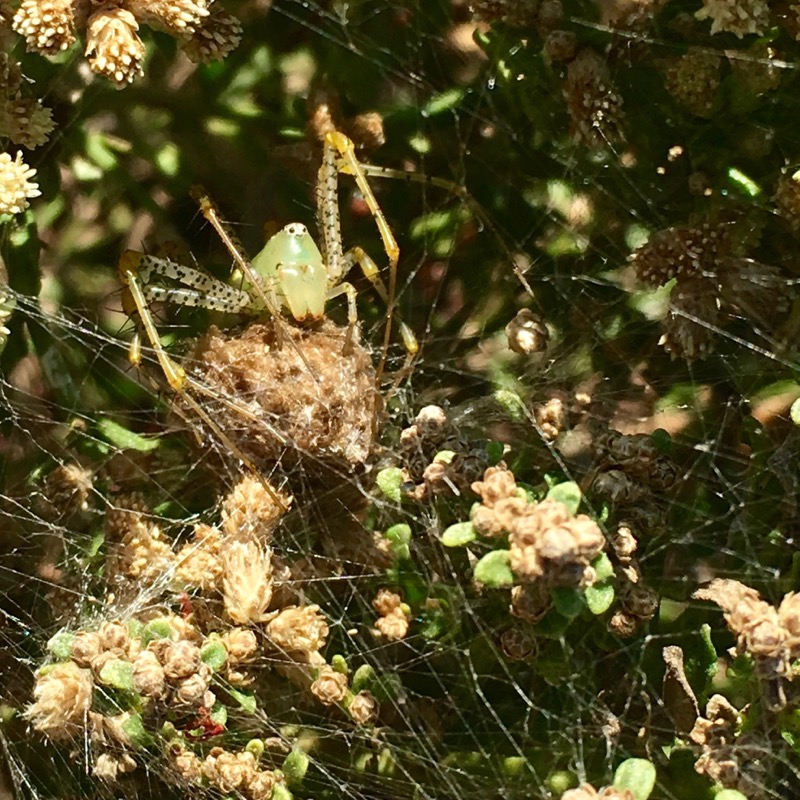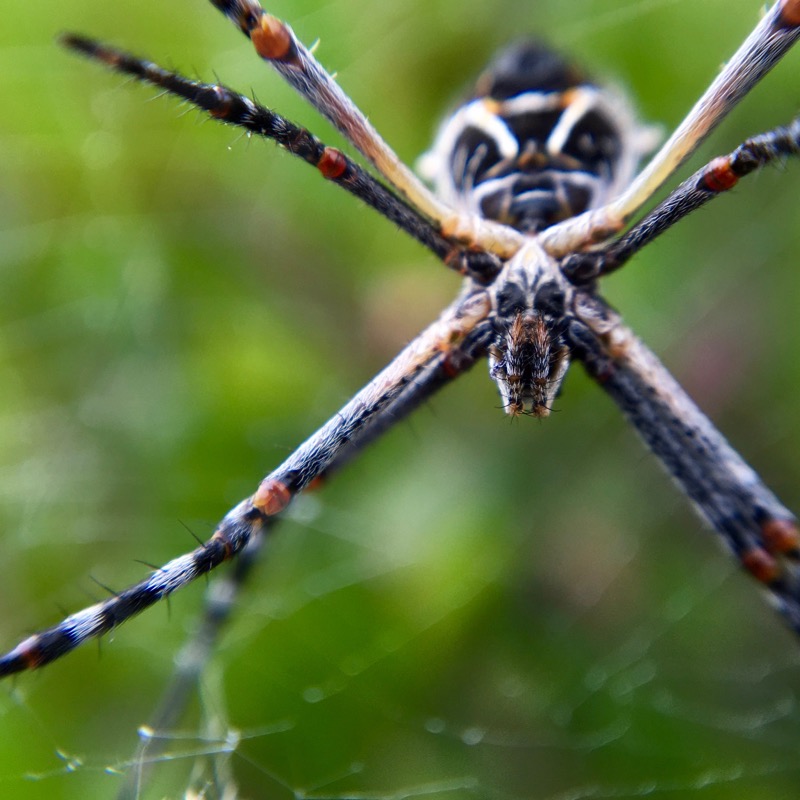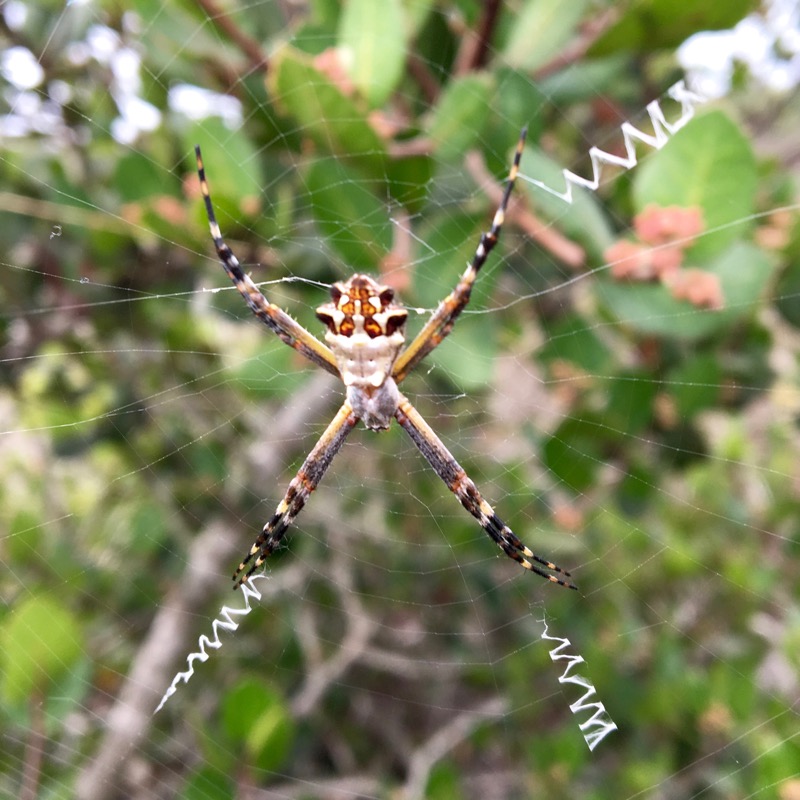This time of year is accented by the hues of orange and red on the leaves, the dip in temperature, and the dramatic sunsets. Here at Cabrillo National Monument, we also see signs of the fall season. The rust color of the spent blooms on the Flattop California Buckwheat and the fluff of the Broom Baccharis. But take a good look closer into that Broom Baccharis and you may see a bright green spider guarding an egg sac. This is the preferred habitat of the Green Lynx Spider (Peucetia viridans). This spider has long, thin legs that are covered in conspicuous black spines. The legs are a translucent green color with many black spots along the femur. The body is also bright green and can sometimes be dotted with red or black spots.
 NPS Photo/Andrew Rosales - A green lynx spider guarding her eggs.
NPS Photo/Andrew Rosales - A green lynx spider guarding her eggs.
This spider doesn’t spin a web to capture its prey. The Green Lynx is an ambush predator. They wait for prey to come nearby and the pounce on it with lightning speed and agility. This spider also has amazing jumping abilities. This is how it got its nickname of “lynx”. The spider however, does use a web for creating silken egg sacs and the spiderlings use silk for ballooning.
This is the opposite of our next spider. The Silver Argiope (Argiope argentata) creates large webs used for capturing prey. These webs are typically accentuated by four stabilimenta, or zigzag lines, that create a centerless “X” shape near the center of the web where the spider rests. The resting spider sits with four pairs of legs each drawn together and splayed out in an “X” shape and aligned with the stabilimenta “X”.
 NPS Photo/Andrew Rosales - A close up of the Silver Argiope in it’s web.
NPS Photo/Andrew Rosales - A close up of the Silver Argiope in it’s web.
This spider is in the family Araneidae (orb-weavers) and is consistent with this family of spiders, wherein the females are much larger that the males of the species. The body tends to be primarily silver with brown and orange colorations on the top and bottom of the abdomen. The females are distinguished by the four projections on the abdomen typically red in color. The legs contain bands of silver, black, and orange.
The Silver Argiope uses their spectacular web to catch and consume small insects. Orb-weavers as a group, consume large amounts of insects, therefore helping to control the insect population. These spiders like to use woody shrubs like the Lemonade Berry to construct their webs between gaps in branches and between plants. Other favorites for web building are the California Flattop Buckwheat and between Prickly Pear Cactus pads.
 NPS Photo/Andrew Rosales - A larger Silver Argiope with distinct stabilimenta “X” shape.
NPS Photo/Andrew Rosales - A larger Silver Argiope with distinct stabilimenta “X” shape.
So as you walk the paths of Cabrillo National Monument this Fall, be on the lookout for the zigzag patterns of the Silver Argiope or the Green Lynx spider guarding her egg sacs in the Broom Baccharis.
